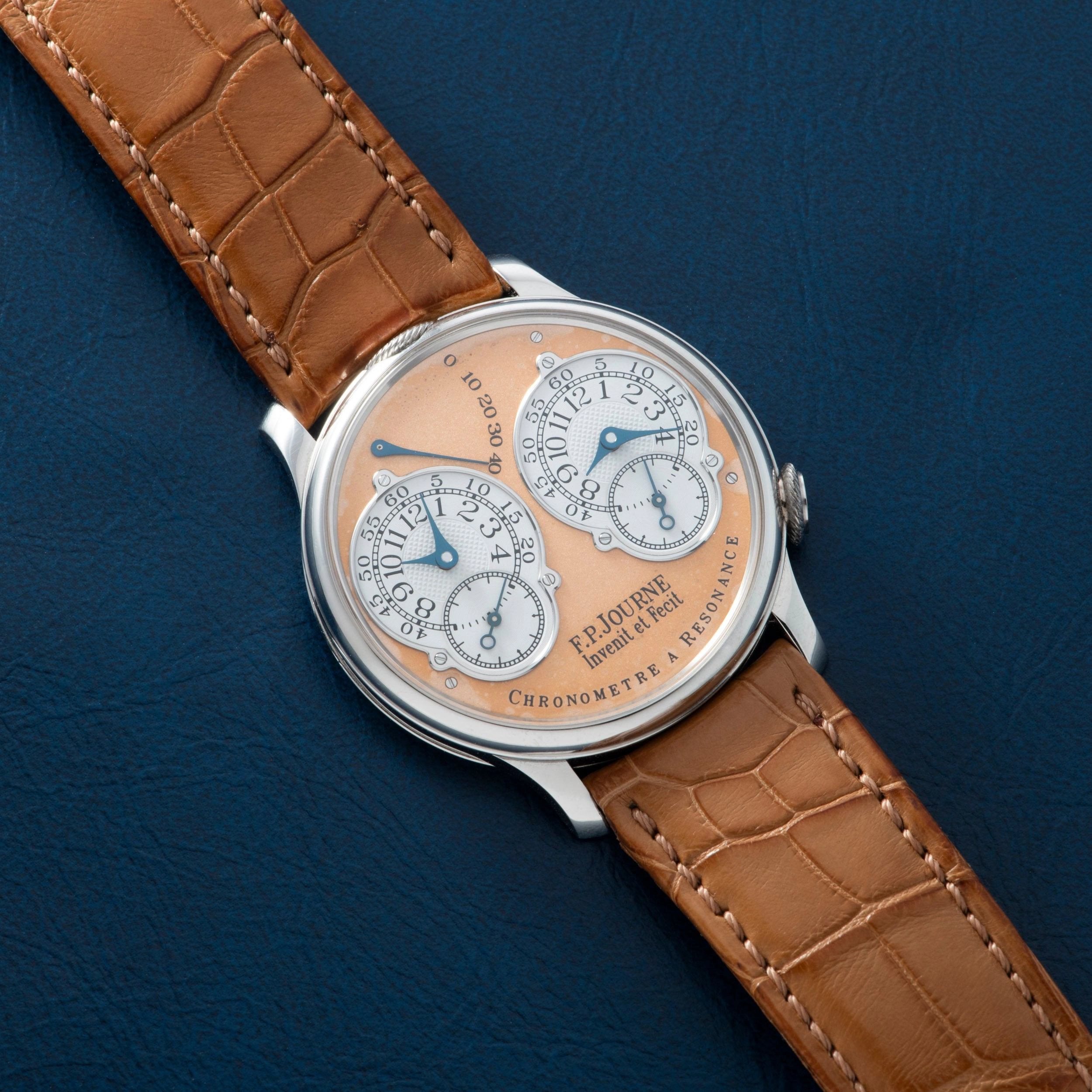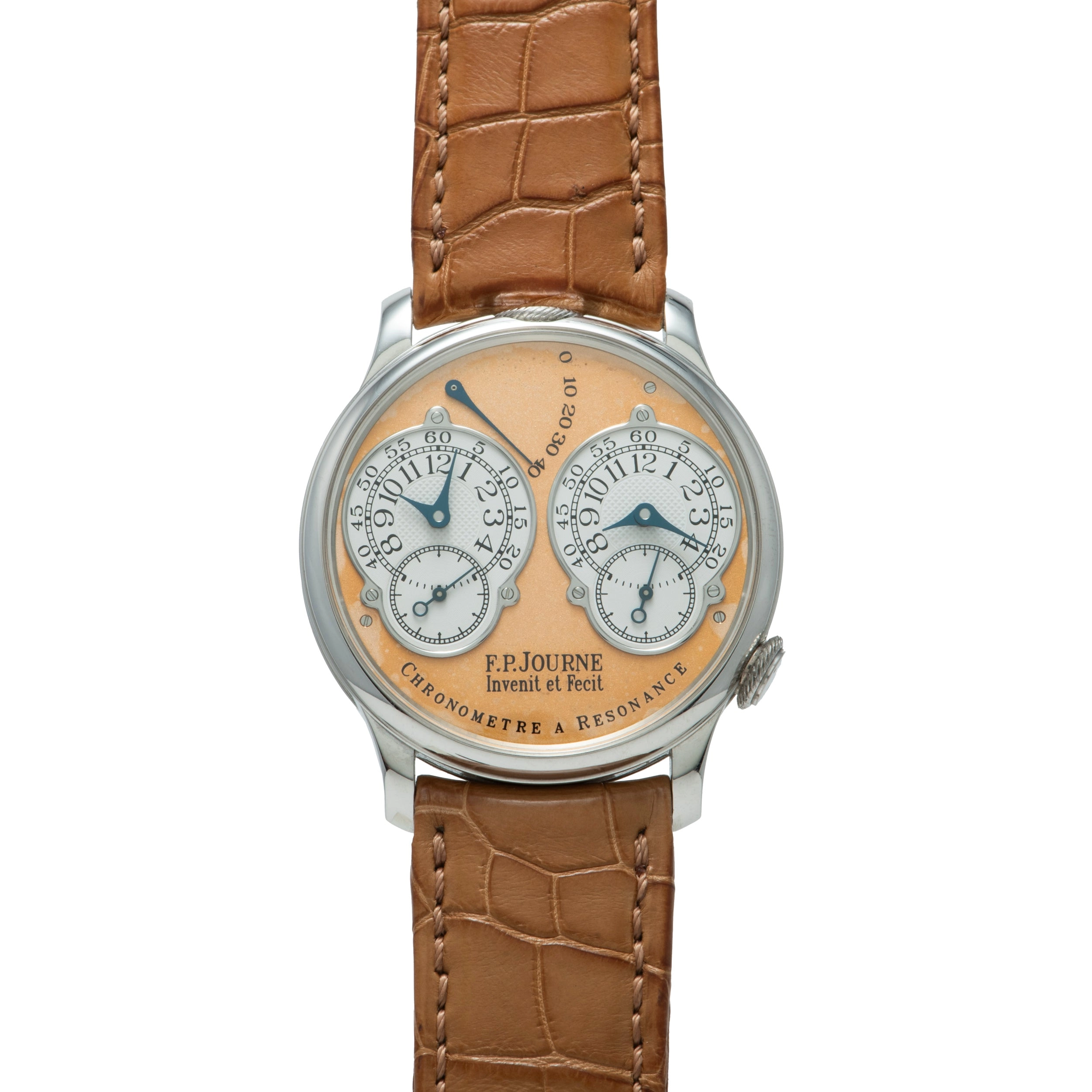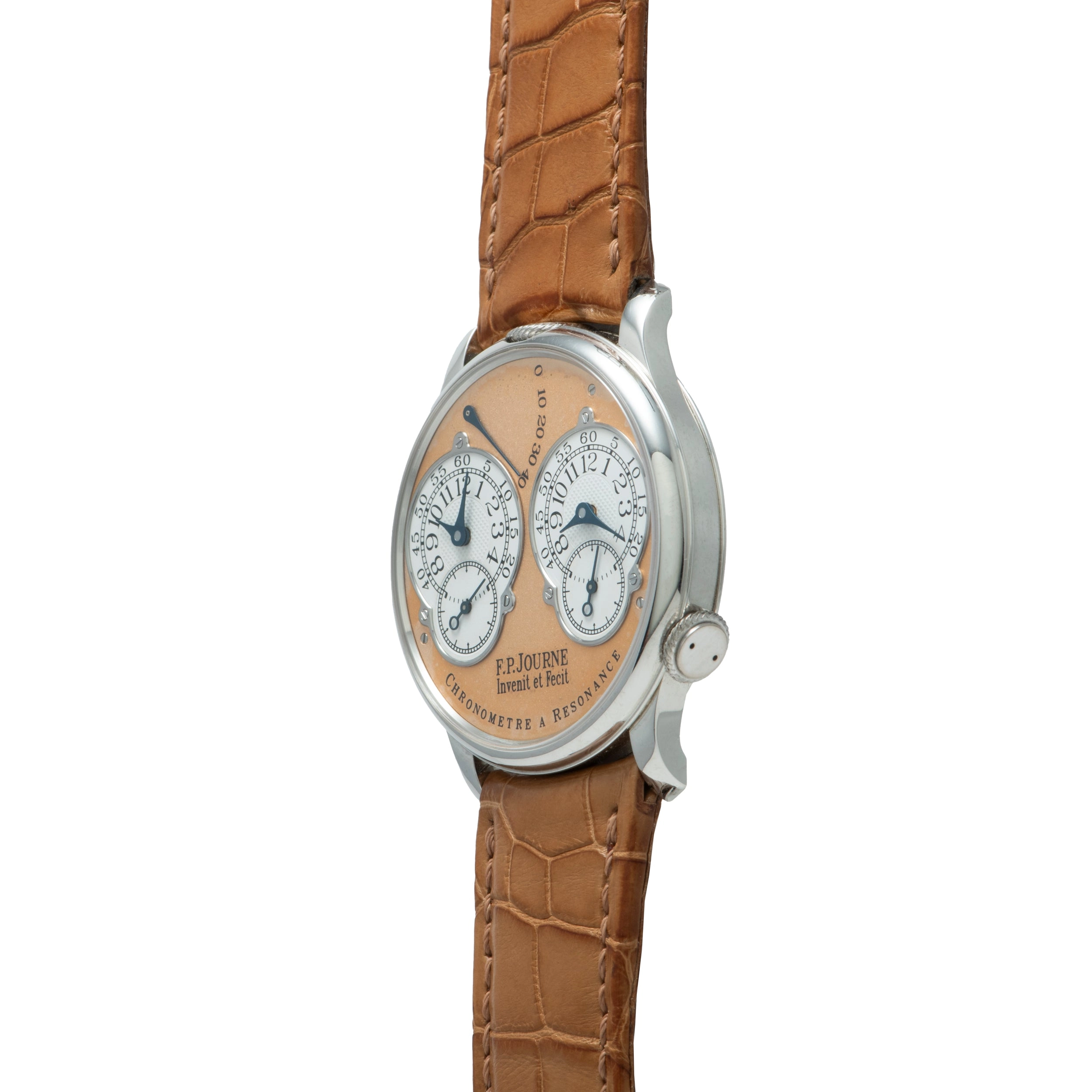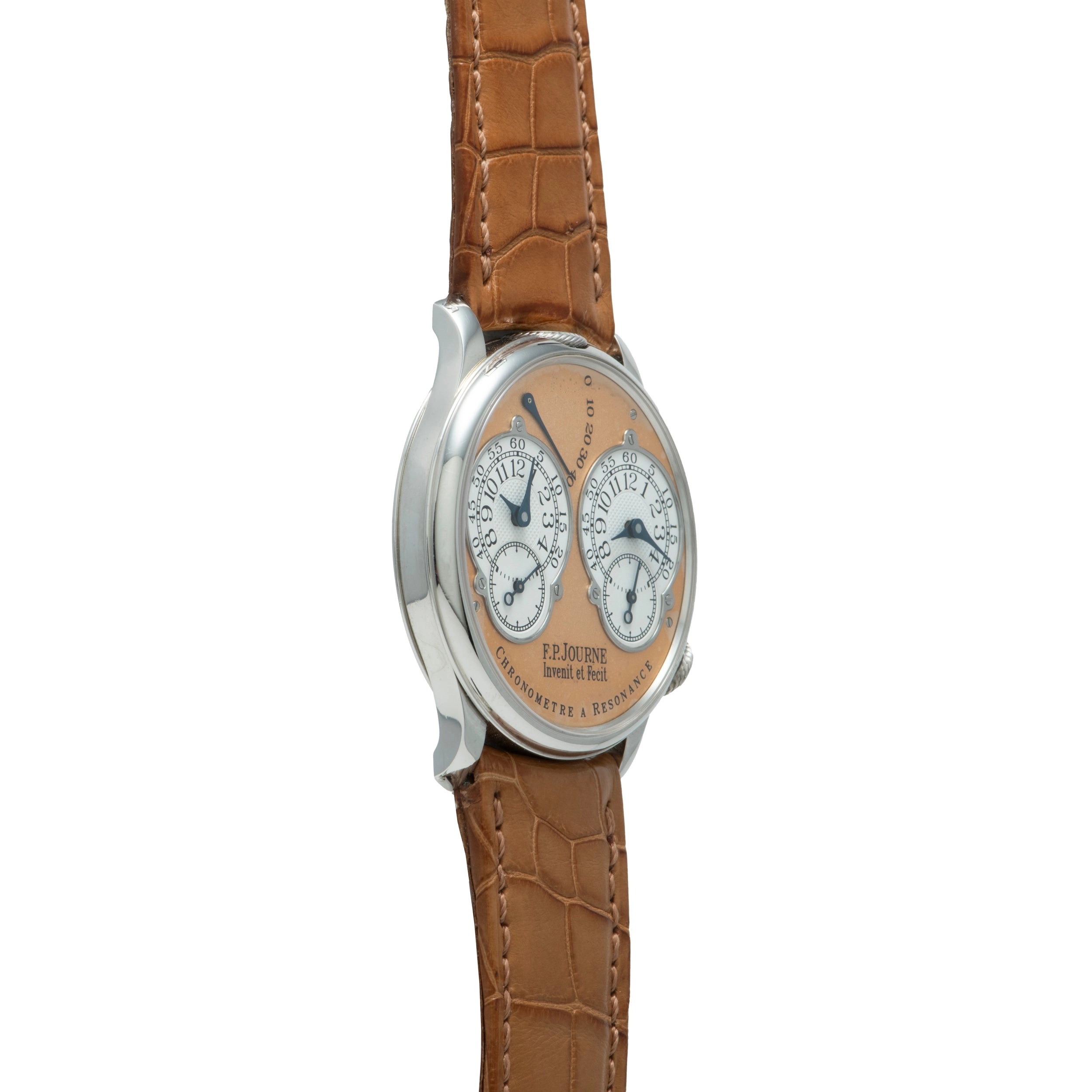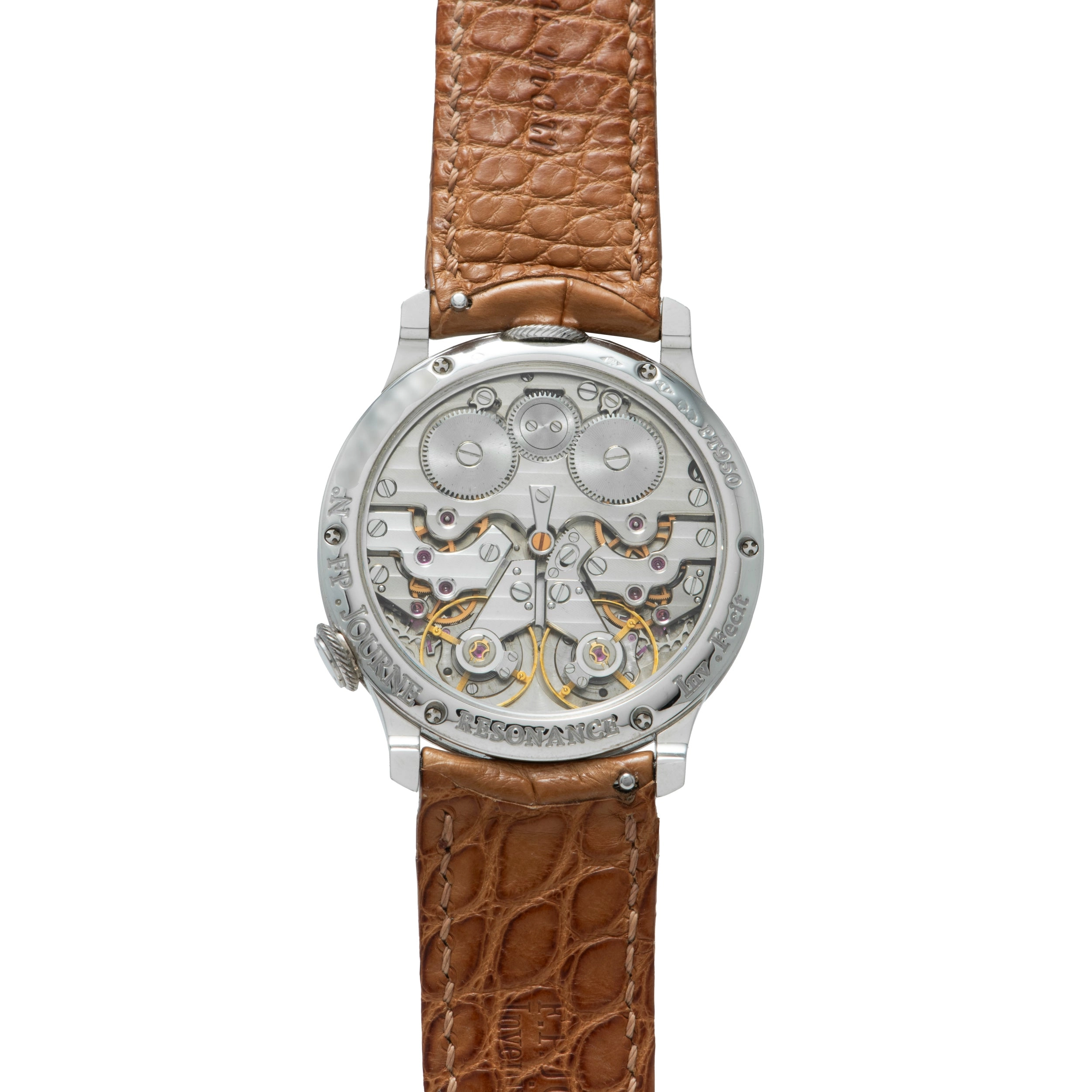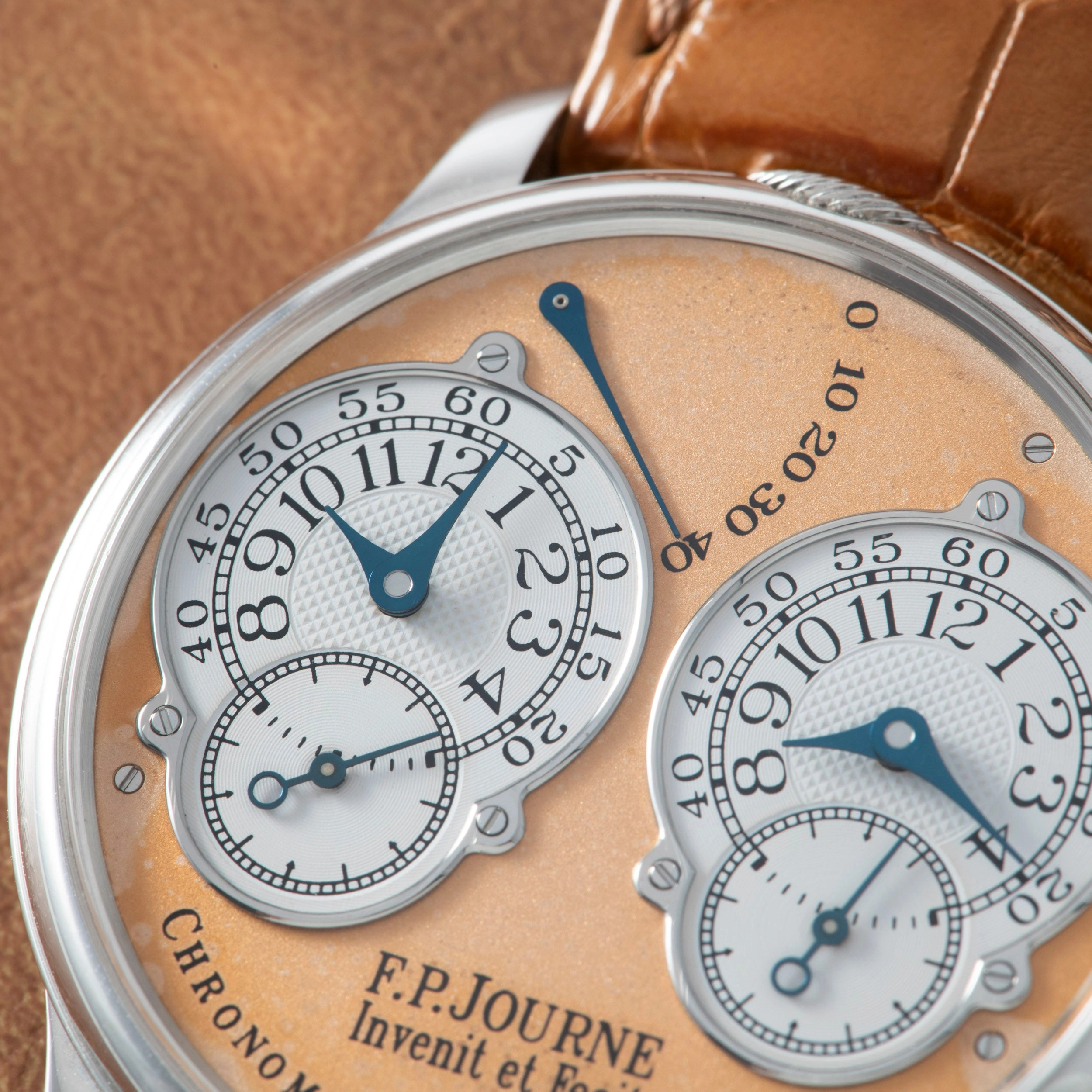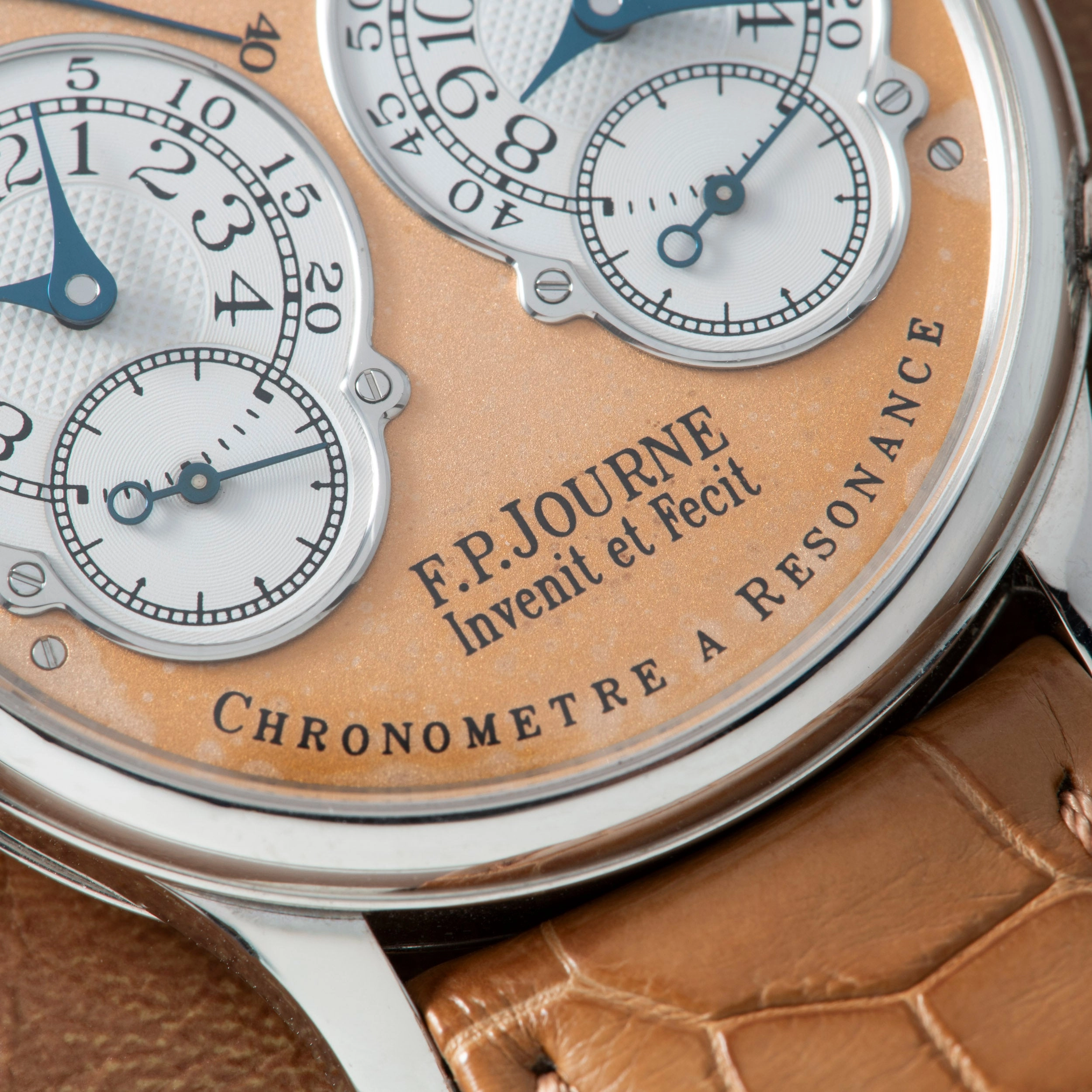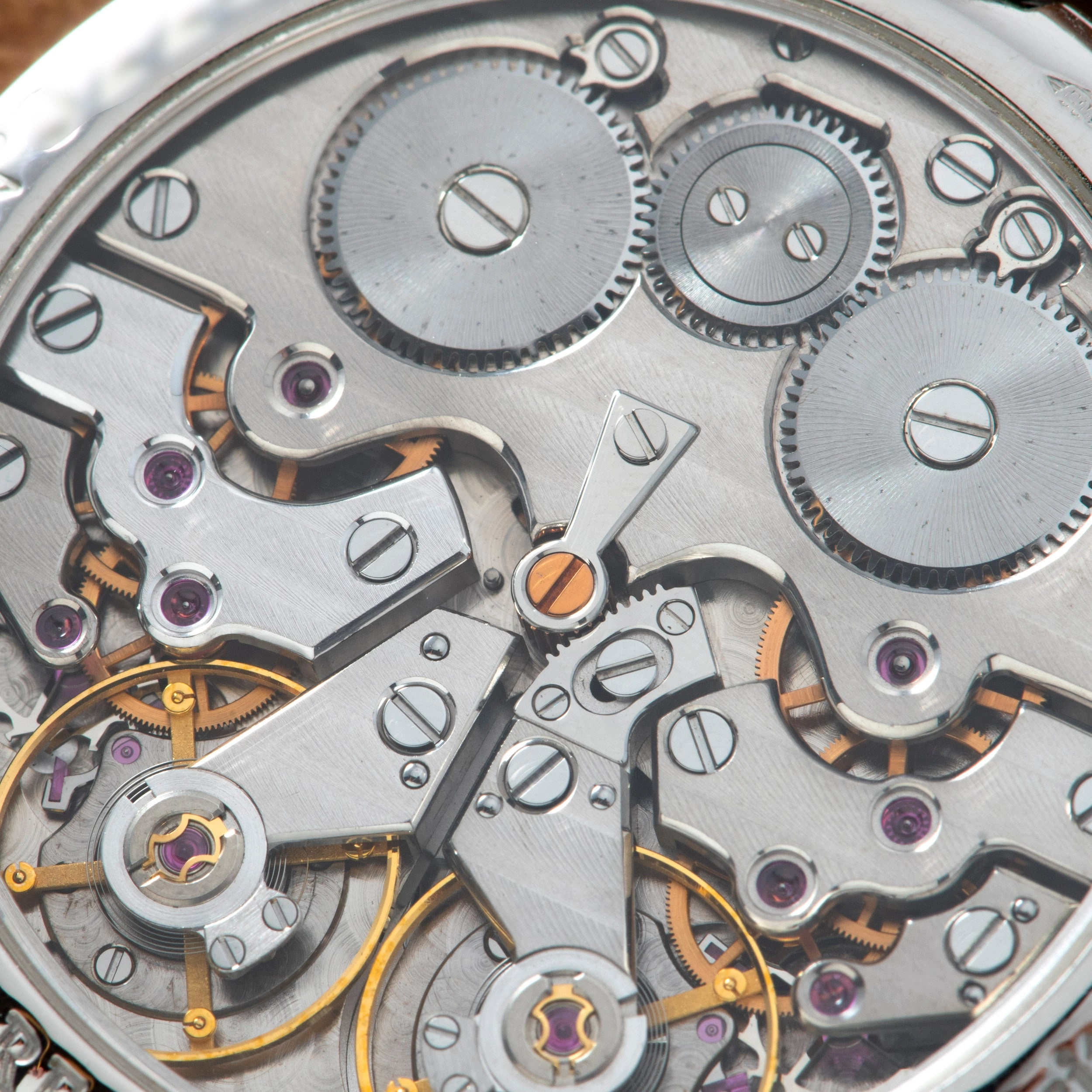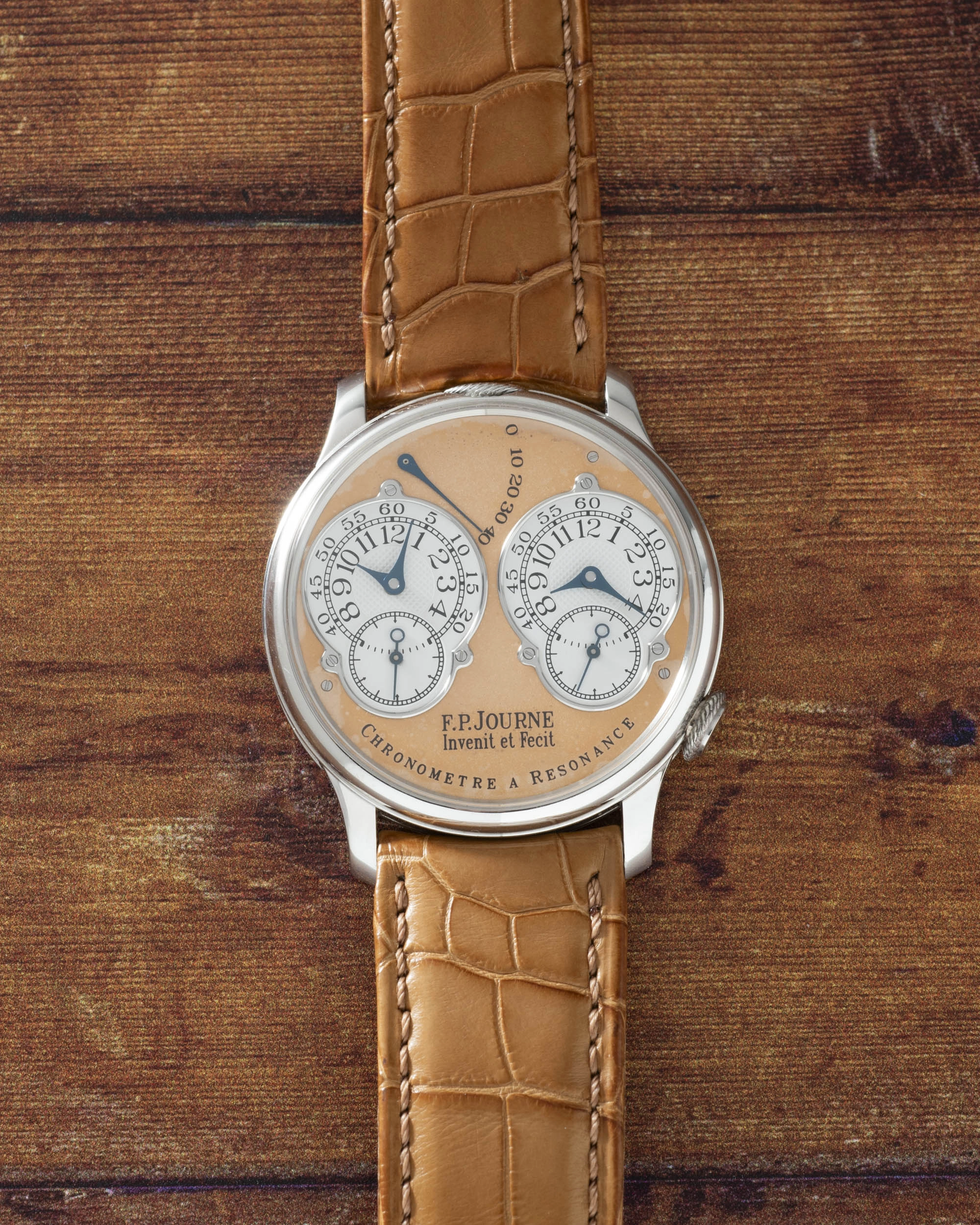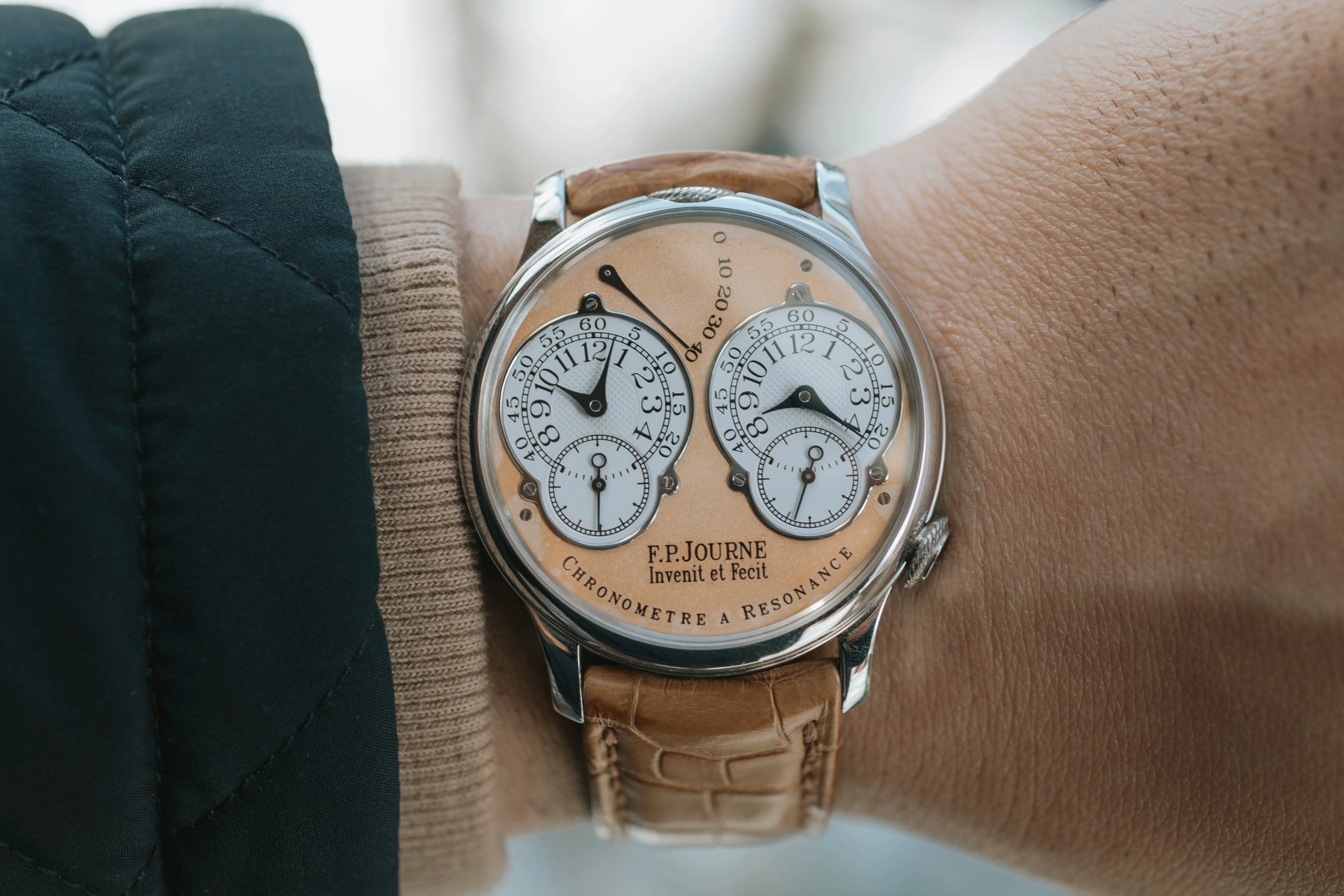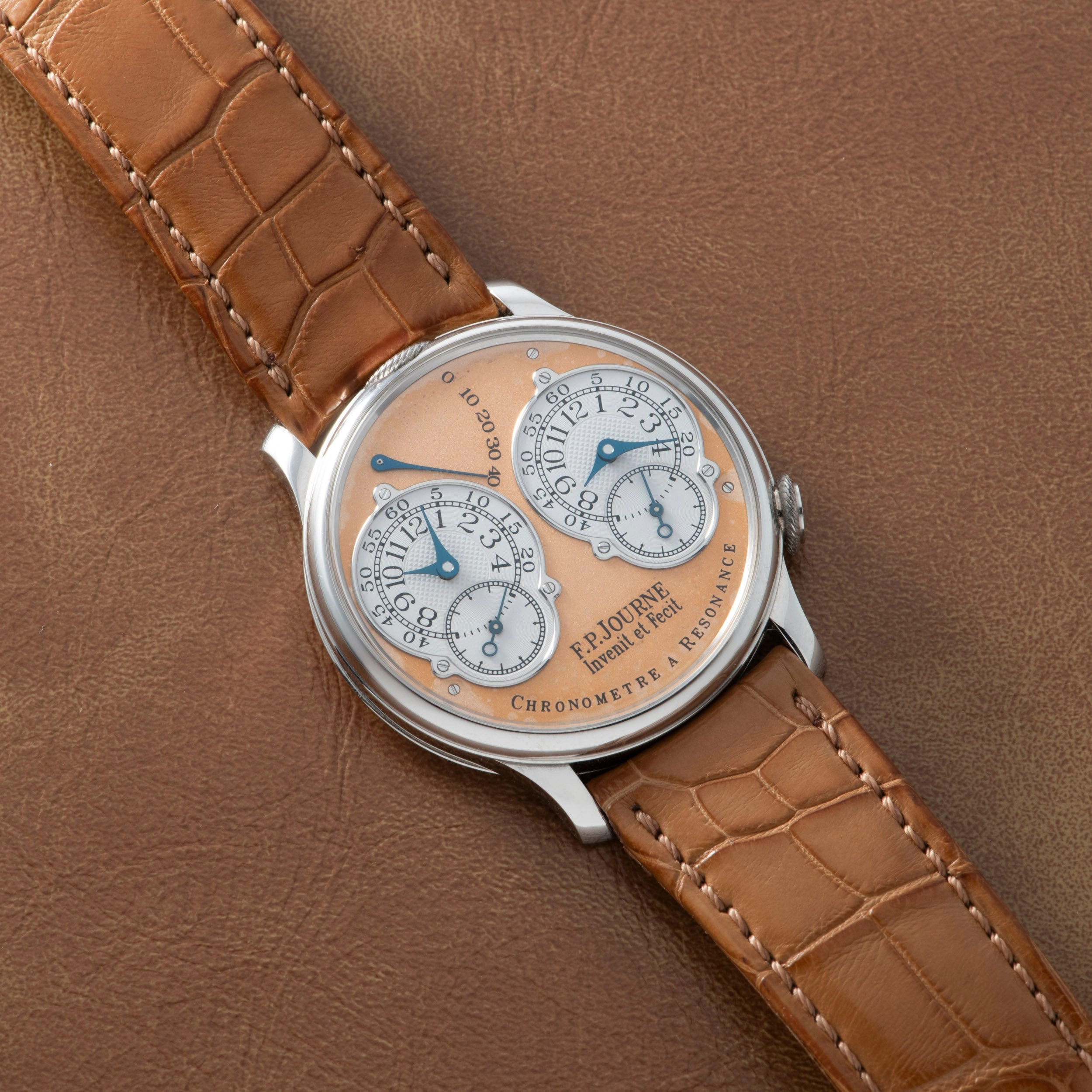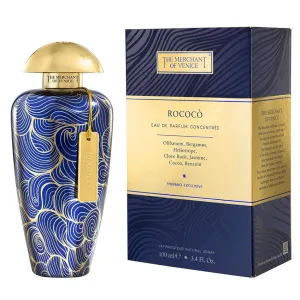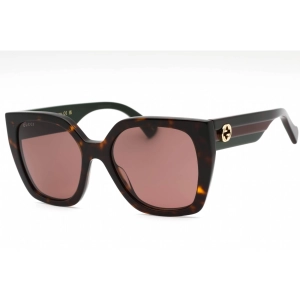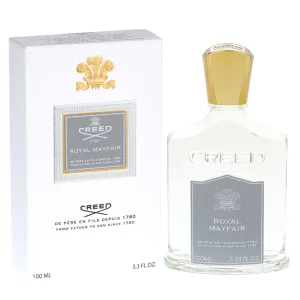So you’ve bought a Patek, maybe an Audemars Piguet, a few Rolexes or a Vacheron. You think you’ve seen it all and are ready to move on to exotic spice collecting, and then you stumble on F.P. Journe. Arguably the father of the modern independent watchmaking renaissance, Journe has paved the road for countless other small manufacturers to make a name for themselves and share their creative eye with the industry.
Leaving school early to study horology, and working in his uncle’s clock repair shop, Journe discovered his knack for all things horology at a young age. Studying the works of Breguet and George Daniels, Journe had an eye for complication and classicism. These influences heavily impacted the look of Journe’s later creations.
After completing his studies and designing a number of commissioned pieces for private clients, Journe decided to set out on his own crafting wristwatches. Never slacking off, his earliest designs were tourbillons with constant force remontoirs, extremely mechanically sophisticated and difficult to execute. The ambitious young watchmaker was already punching above his weight, and by the time he started his own eponymous brand, collectors were already getting excited about Journe’s promise.
If there’s one design that is most originally F.P. Journe, it’s undoubtedly the Resonance. Journe’s aspirational project for many years, the idea for a Resonance wristwatch came from pendulum clocks Journe had seen made by Breguet and Antide Janvier in the 18th century. The concept of resonance essentially suggests that by placing two escapement wheels in extremely close proximity, the two balances would synchronize, allowing the inaccuracies of one to counterbalance those of the other, and thus pulling both into a higher degree of accuracy. The calibration of these essentially two separate watch movements enclosed in one case is extremely difficult, and takes extensive training.
This particular Resonance is one of the most significant for F.P Journe. The earliest and rarest Resonances were 38mm with brass movements. This piece falls under that extremely limited run. Dating to 2003 (just 3 years after the debut of the model), this model is fashioned from platinum and features a striking rose gold solid dial.
It flaunts dual sub registers displaying two independently adjustable timezones with guilloché finishing. Details abound, with black polished dial frames and screws, blued-steel hands, a power reserve indication at 12 o'clock, and two separate crowns — one for winding and setting, and the other for synchronizing the subsidiary seconds with a zero reset flyback function. The crown features an engraved scroll motif — a signature characteristic of F.P. Journe.
The beautiful 38mm Resonance is set on a signed, double sided alligator strap with a large rectangular scale alligator on the outside and smaller scale alligator on the underside of the strap. By using double-sided alligator instead of the more affordable and conventional calf skin on the inside, Journe has not only improved comfort, but also longevity. The strap is completed with a signed platinum pin buckle to match the case.
On the reverse, Journe’s beautiful resonance movement is on full display, made from brass with both balances placed in close proximity. A true mechanical masterpiece, an argument can be made to wear this watch backwards so the whole world can appreciate watchmaking art at its finest!
This watch played a significant role in the story of F.P. Journe and is sure to continue to be regarded as one of the most important watches in the expansion of the independent watchmaking industry. This particular example has aged to a gorgeous glow with a lightly patinaed dial.
No need to visit the Louvre to see the Mona Lisa when you can come in to experience her equivalence in mechanical form!




